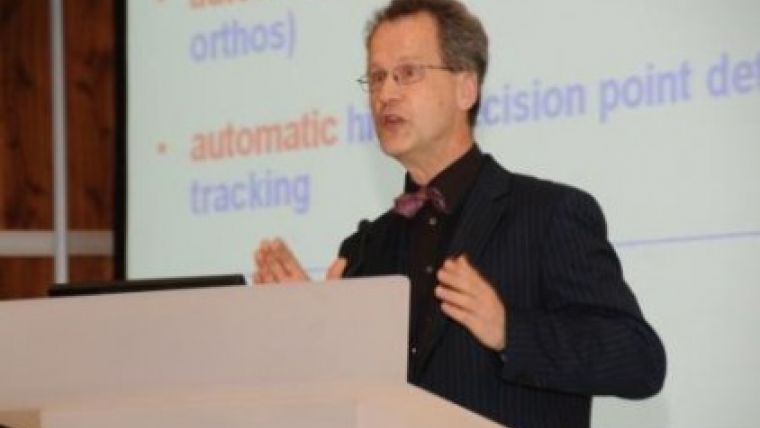Tomorrow’s Global Geospatial Needs
GIM International Interviews Christian Heipke
The International Society for Photogrammetry and Remote Sensing (ISPRS) is one of the leading organisations within the geomatics sector and has a long-standing partnership with GIM International. We spoke to Christian Heipke, secretary general of the ISPRS, during the 2013 Geospatial World Forum in Rotterdam, The Netherlands. Here, he shares his views on topics such as the growing role of unmanned aerial systems (UAS) and oblique imagery – just two examples of major developments in data acquisition at the moment – as well as the future challenges for the industry.
Congratulations on receiving the Photogrammetric (Fairchild) Award, the highest scientific recognition from the American Society for Photogrammetry and Remote Sensing (ASPRS), in March 2013. How did that feel?
The award came as a big surprise. Of course, I felt very honoured to have been selected. But when I saw the list of previous winners, I felt that my name didn’t really belong among them. Firstly because the award seems to honour lifetime achievements, and I still feel too young for such recognition. And secondly, I don't think my contributions are significant enough for this award. But then, I did feel proud as well ...
Two recent major developments in photogrammetry are oblique imagery and unmanned aerial systems (UAS). Which key opportunities does oblique photogrammetry offer in terms of 3D city modelling?
First of all, oblique images – which have actually been around for many decades – provide formidable facade texture for automatically rendering 3D city models. Obviously, if doors, windows, balconies and suchlike need to be entered into the models as spatial objects (in contrast to pure texture), these can be extracted from oblique images. In addition, monitoring activities taking place in urban settings are largely facilitated using facade views. Other applications comprise determining the facade material – such information can be useful for sound simulation – and monitoring a building’s heat flux using thermal oblique images. In short, oblique images are a valuable tool for visualisation, and they can be used to derive a lot of information which is not accessible from aerial images.
Which geo-related applications are likely to benefit most from using UAS?
As a platform, the type of UAS we are talking about in photogrammetry closes the gap between terrestrial and aerial imaging. A UAS is much easier to employ than aircraft, and at least for small projects it is much more economical. Possible applications include archaeology, precision farming and mapping small areas in general. If monitoring is part of the job and the area needs to be revised frequently, for instance in construction site documentation or when monitoring traffic jams or sporting events, this is of course an added bonus. One can also envision a UAS being equipped with a thermal camera to detect heat leakages in industrial plants. In disaster management, of course, rescue crews can benefit from using UAS to quickly obtain an overview of the situation, and security applications also profit from UAS.

Value staying current with geomatics?
Stay on the map with our expertly curated newsletters.
We provide educational insights, industry updates, and inspiring stories to help you learn, grow, and reach your full potential in your field. Don't miss out - subscribe today and ensure you're always informed, educated, and inspired.
Choose your newsletter(s)
























